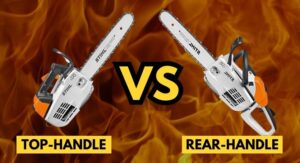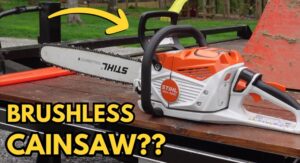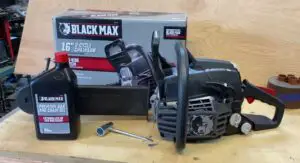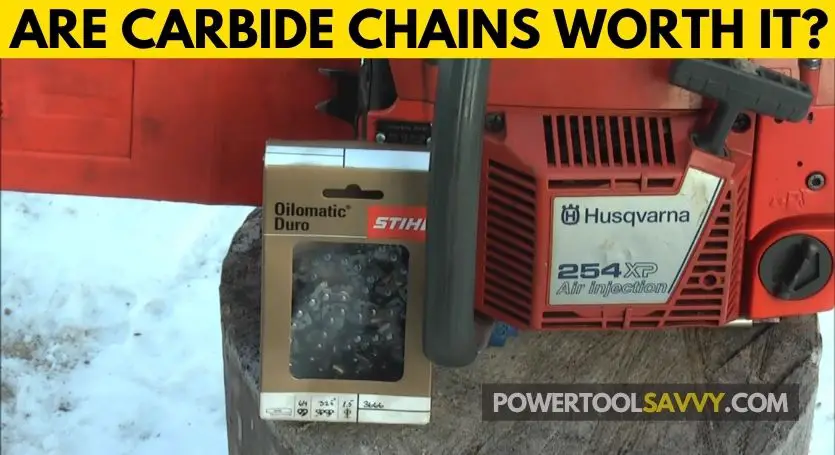
Are carbide chainsaw chains worth it?
Carbide chains are more durable than regular chains. They’re specially designed for rough and tough jobs. They can cut through harder materials and still stay sharp for up to 5 times longer. But for typical wood-cutting tasks, these specialty chains are not worth it. Because they’re a lot more expensive, harder to sharpen, and slower than regular chains.
Btw, I’m Samuel Anali and I have 20+ years of PRO chainsaw experience. In this article, I’m going to discuss if carbide chains are really worth it or not.
Plus, I’ve surveyed hundreds of chainsaw users to get their HONEST opinion about these chains.
Table of Contents
ToggleWhat are Carbide Chainsaw Chains?
Carbide-tipped chains are specially developed chains for heavy-duty cutting jobs. As the name suggests, they feature a carbide tip on the cutting tooth that’s much harder than traditional steel chains.
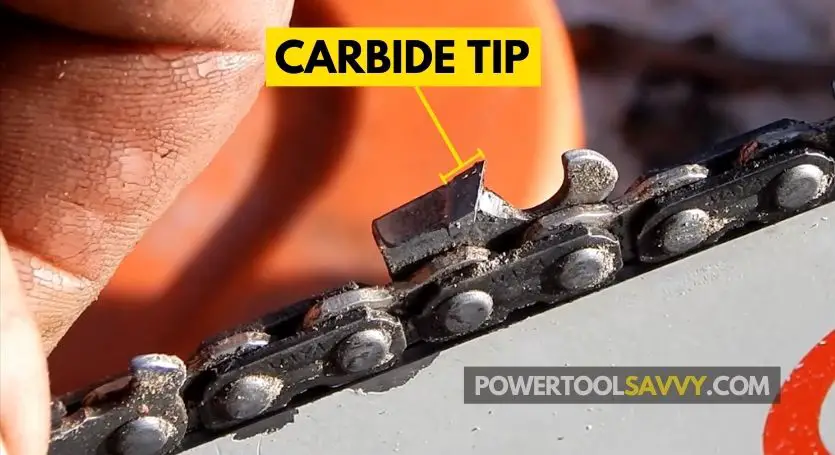
Plus, these chains are designed to stay sharp for longer, requiring less frequent sharpening.
On average, a carbide chain can go through 3-4 times more wood per sharpening than a standard chain. (Not exaggerating at all!)
This makes them ideal for cutting large amounts of hardwoods like elm, oak, and maple.
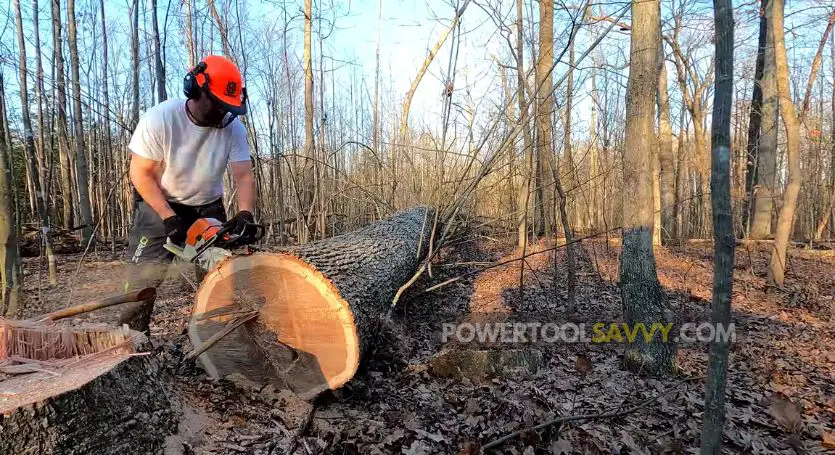
There’s more!
Carbide chains are also more resistant to wear and tear, meaning they’ll last way LONGER than regular wood-cutting chains.
But in terms of design, there’s NO big difference. Carbide-tipped chains look just like regular saw chains.
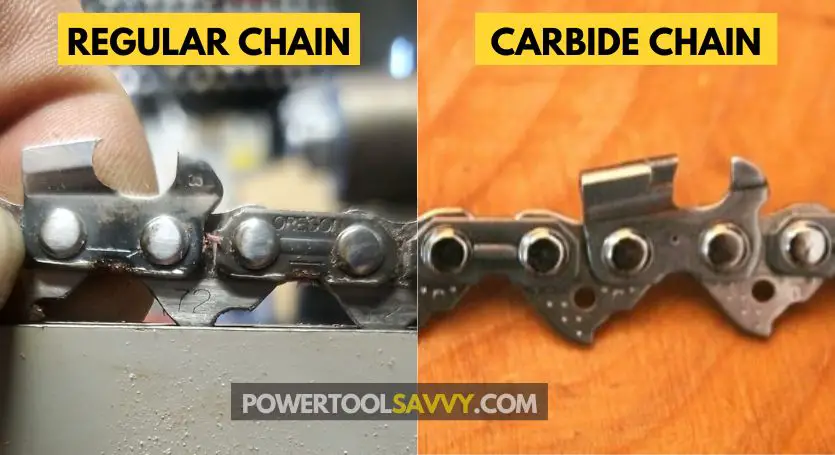
Benefits of Carbide Chainsaw Chains
I’ve already given you a sneak peek into the PROS and CONS of carbide chains.
Now let’s dive a bit deeper and EXPLORE the key benefits.
1. Durability and Longevity
It’s NO secret!
Carbide-tipped chains are more durable and last longer than regular wood-cutting chains.
You can expect up to 4-5 times the life of a conventional chainsaw chain. (This sounds like a GREAT deal if you don’t want to replace your chain too often!)
Two of my saws (STIHL 029 & 291) have been running on the same carbide chains for more than 3 seasons now. (cutting juniper, oak, and cedar on a regular basis)
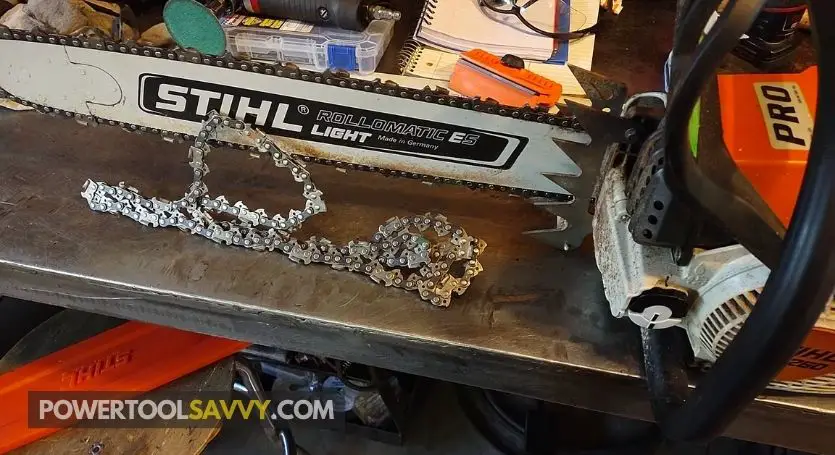
2. Require Less Frequent Sharpening
When compared to regular chainsaw chains, carbide-tipped ones are less prone to dulling.
This means you can go through a lot of wood before needing to sharpen the chain. (Less time spent sharpening = More time cutting)
For example: 👇
On average, a regular chain requires sharpening every 2-3 hours of continuous cutting. But, carbide chains can retain their sharpness for up to 8-10 hours!
Think I’m kidding?? GO ahead and give it a try for yourself!
3. Ability to Cut Through Harder Materials
Yup, that’s right!
Carbide-tipped chains are capable of slicing through some of the toughest woods (oak, cherry, ironwood, cedar, etc).
Plus, these chains are GREAT for cutting through frozen wood, ice, railroad ties, pipes, tele poles, rock, and even small metallic nails.
(Do they last against hard rocks or larger spikes? NO, they surely don’t!)
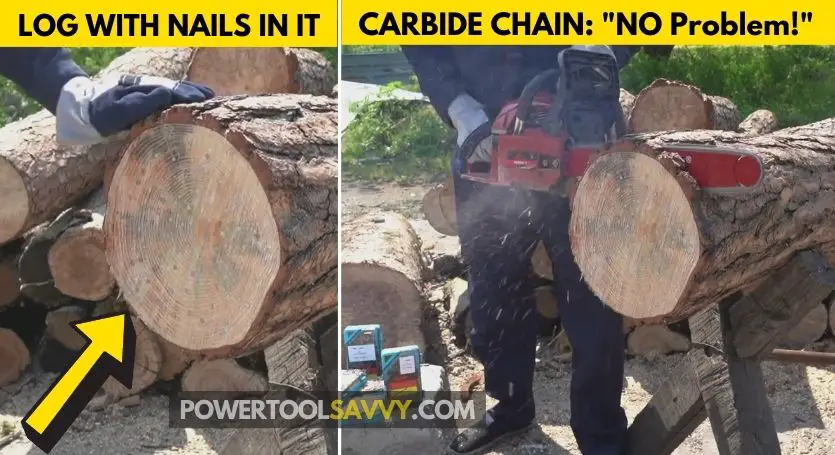
That’s not all!
Carbide chains are also used by firefighters to cut through roofs, walls, and pipes during rescue missions.
Let’s hear it straight from a firefighter about carbide chains: 👇👨🚒

4. Resistance to Wear and Tear
The BEST part about carbide chains??
Well, carbide chains are designed to be resistant to wear and tear.
This means they’re less prone to breakage and stay sharp for longer.
While a regular chain gets dull as soon as it hits the dirt (or comes in contact with the ground), carbide-tipped chains don’t seem to mind dirt and sand at all.
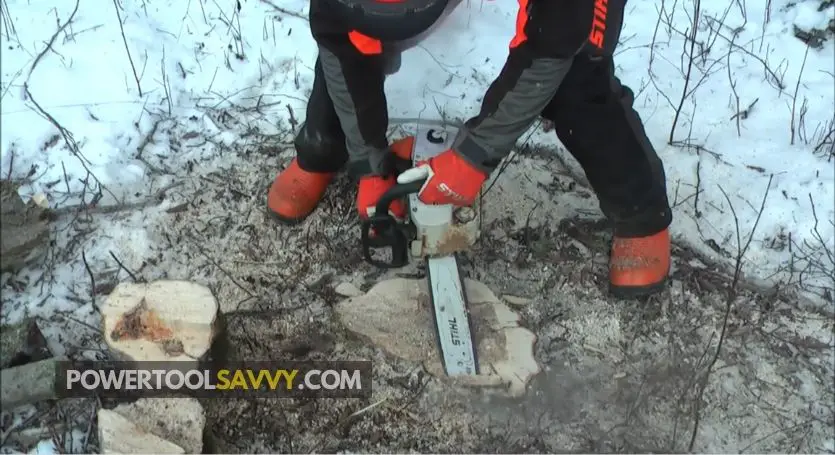
That’s why, when it comes to removing a tree stump or slicing through a dirt log, I sometimes put a carbide chain on my saw! (Learn More: Does Dirt Dull a Chainsaw Chain?)
Let’s see what Trent Collins, one of our trusty Facebook group members, had to say: 👇🗣️
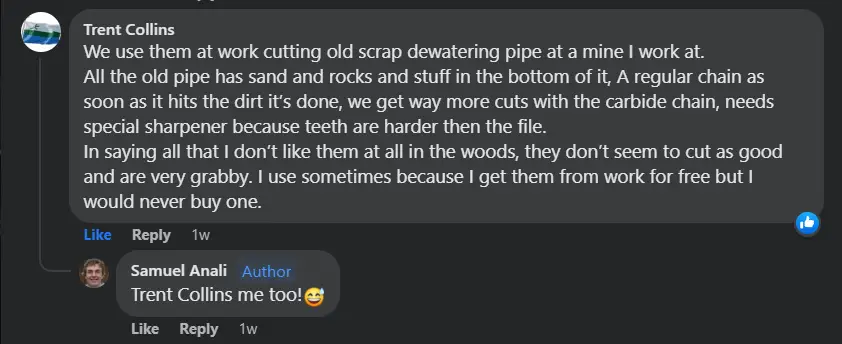
On top of it, carbide chains are more resistant to stretching when compared to regular chains.
Drawbacks of Carbide Chainsaw Chains
Let’s not forget the DRAWBACKS of carbide saw chains.
1. Carbide Chains are Expensive
Can you guess at what puts most people off from buying carbide chains?
You’re right!
It’s the price tag.
Carbide chains are way more pocket heavy than regular steel chains.
While a regular 16″ chain might cost you around $15 to $25, a carbide-tipped one could easily be four or five times as expensive.
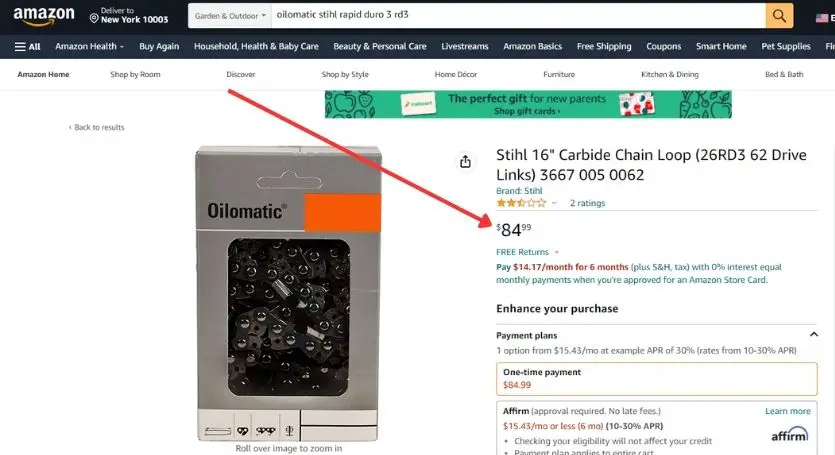
And depending on brand, size, and quality, the cost could go as high as $200.
Unless you’re a professional, the cost might be hard to justify. Even I, a chainsaw enthusiast, found the price too steep for my budget.
The carbide chains I have in my collection are only for test purposes and special projects.
To be honest, I would never pay that much for a chain if I’m just trimming my garden!
2. Harder to Sharpen and Maintain
The thing I hate the most about carbide chains is that they’re harder to sharpen.
Let me explain!
I like to sharpen my chains myself. Because once (and the only time) I had my chains sharpened by a professional service, I got them back in a terrible state.
Also, this way, I can control the sharpness and proper angles of my chains.
But with carbide chains, you can’t sharpen them with a normal round file. They can only be sharpened with a diamond wheel on a bench grinder.
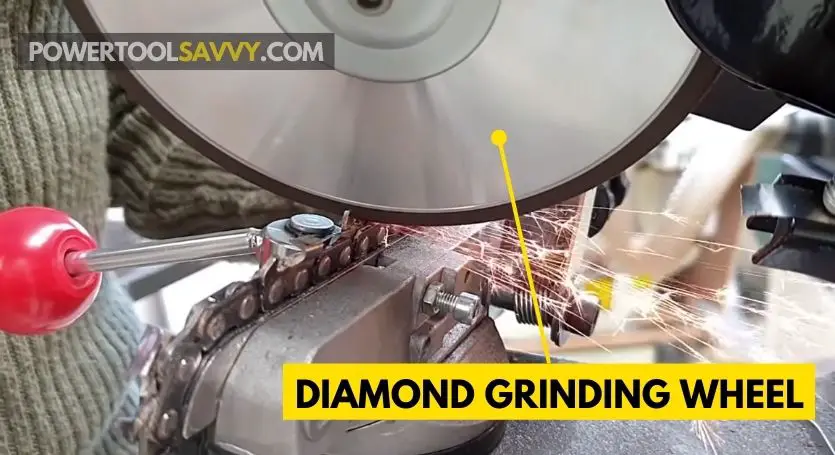
That’s why professional sharpening is a must for carbide chains. And it could cost you anywhere from $20 to $30.
Can you imagine??
If you ask me, I would rather buy a new regular chain for my chainsaw with that money. (Read this article where I’ve discussed the average cost to get a chainsaw chain sharpened)
3. Slower Cutting Speed
If you’ve ever used a carbide chain, you’ll know that they cut than steel ones.
This is because the rakers (the pointy tooth that sits right in front of each cutter) on a carbide chain are higher than traditional chains.
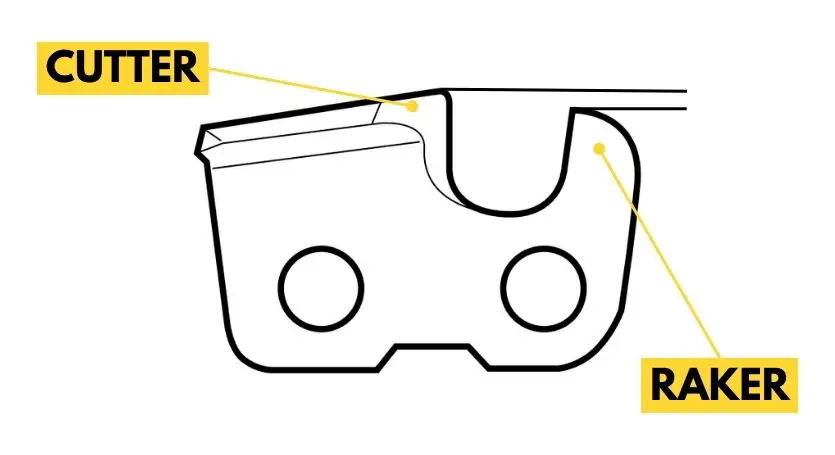
As a result, the cutter doesn’t penetrate the wood as deeply as it should and takes longer to cut.
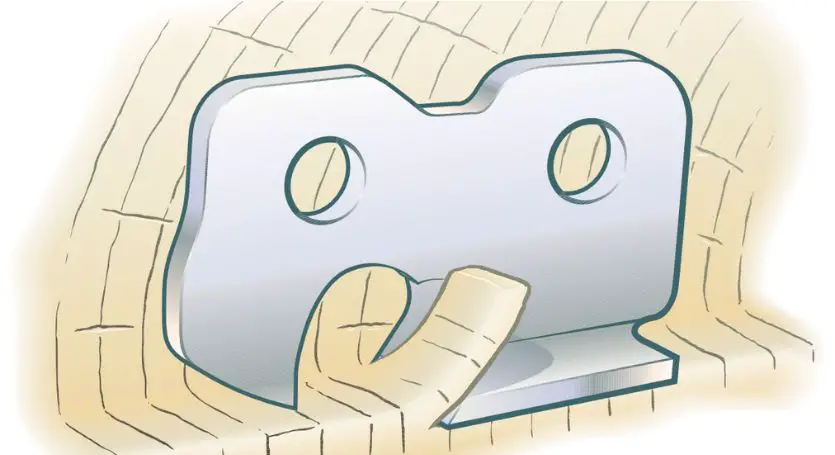
But why is that??
Well, this is mainly due to 2 things: 👇
- First of all, it helps protect the carbide tip from chipping or being torn off,
- Secondly, it reduces the chances of kickback.
But for a regular woodworking job, the slower cutting speed might not be ideal.
4. Difficulty Finding the Right Size
Here’s what you need to know: 👇
Chainsaw chains are not universal. You need to find the RIGHT chain that matches your saw’s requirements.
Carbide chains are available in some very specific sizes. If you don’t find the exact size for your chainsaw, you might be out of LUCK.
In addition to that, the supply and availability of carbide chains are quite LIMITED!
Even if you found the correct size online, there’s a high chance it won’t be in stock – and you’ll have to wait weeks for it to be delivered.
So, unless you’re willing to do a lot of research and wait for weeks, you might have a hard time finding the right carbide chain for your saw.
Are Carbide Chainsaw Chains Worth the Money?

Carbide chainsaw chains are durable. They can cut through hard objects and stay sharp for up to 5 times longer than standard saw chains. That’s why they’re used by firefighters in rescue missions. But for typical wood cutting tasks, these specialty chains are not worth it.
Don’t get MAD!
Here’s why…
First of all, carbide chains are HELLA expensive. As already mentioned, they can cost anywhere from 2 to 10 times more than a regular saw chain.
Ask yourself, would you rather buy one carbide chain for $100 or five regular chains for the same price?
The STORY doesn’t end there!
Sharpening a carbide chain is another pocket-heavy task. Our local Stihl dealer charges $25 per chain to sharpen (that’s a lot compared to only $7 for a regular one).
And lastly, carbide chains are not made for regular wood working!
They’re meant for heavy tasks, like demolishing hardened concrete, cutting treated hardwoods (railroad sleepers, tele poles, for example), and cutting dirty logs, which would dull a conventional chain in no time.
But if all you’re doing is chopping up firewood, it’s just overkill!
I posted a poll on our Facebook community asking the SAME question.
19% said that they’re a complete WASTE of money, while 23% said they’re GOOD but NOT RECOMMENDED for typical wood cutting!

(I was surprised to see that 50% of people who voted in the poll had no idea what carbide chains are and their intended use.)
I also surveyed Reddit. Here are the results: 👇

As you can see, it’s not only me! Most people out there don’t think that carbide chains are worth the extra money. (Check the full post here)
When to Use a Carbide Chainsaw Chain?
I know what you’re wondering!
Here are the 5 most common scenarios where a carbide chain would be useful: 👇
- Cutting through hard materials: Carbide chains work great for hard materials like concrete, frozen woods, hardwoods, metal, and fiberglass. They’re also good for cutting through roots or stumps.
- Industrial applications: Carbide chains are widely used in industrial applications like construction, demolition, and metal fabrication.
- Cutting logs with embedded nails: You’ll often get into situations where you need to cut logs that have nails in them. In this case, a carbide chain could be an option!
- Rescue missions: As already mentioned, firefighters use rescue saws with carbide chains in emergencies to quickly cut through obstacles and reach people in distress.
- Cutting dirty logs: Dirt is abrasive. It can dull your regular saw chain in a matter of seconds. But carbide chains don’t care about dirt. They just keep on cutting, no matter what!
That’s all I can think of right now!
There are obviously plenty of other situations where a carbide chainsaw chain could come in handy.
Who Makes the Best Carbide Chainsaw Chain?
Right now, there are only a handful of manufacturers who make carbide chains.
The two biggest names in the carbide chain industry are Stihl and Rapco.
Both companies produce high-quality chains that are designed to last. But if you ask me to pick the best carbide chain brand out there, I would have to go with Stihl.
Stihl’s RAPID DURO 3 or RD3 lineup of carbide chains is a top-of-the-line product that offers superior performance and durability.
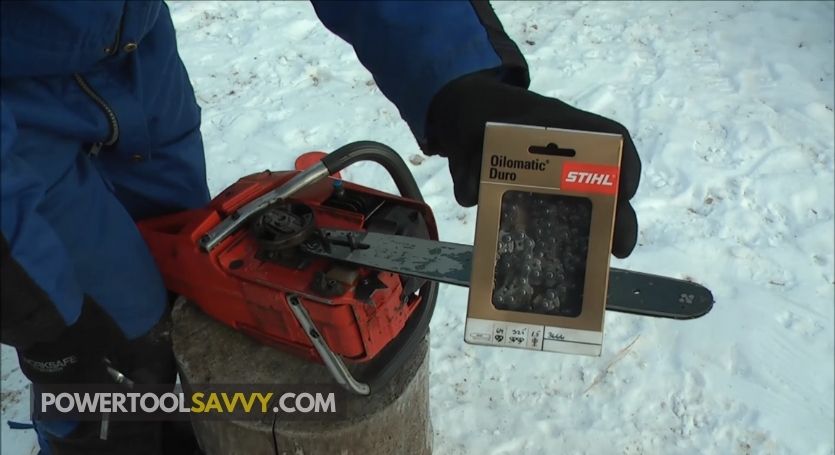
It’s designed to stay sharp up to four times longer than regular chains and cut through hardwood with EASE!
Stihl says, “It is especially suited for cutting dirty wood, treated wood, roots and hardwoods, which would quickly dull conventional chains.” (Source)
Unfortunately, it’s only available in .325″ and 3/8″ pitch. Plus, it’s quite HARD to find the RD3 in offline stores.
Apart from Rapco and Stihl, there are some other smaller players in the market, like –
- Woodland
- Forester
- Raptor
Carbide Chainsaw Chain Related F.A.Q.s
Are Carbide Chainsaw Chains the Most Durable Out There?
No, diamond-tipped chains are now the most durable saw chains out there. They’re made by putting diamond grits and steel core together in a special process, making them extremely durable and wear-resistant. These chains are so durable that they can easily cut through thick metal bars. (Here’s how diamond-tipped chains look:)
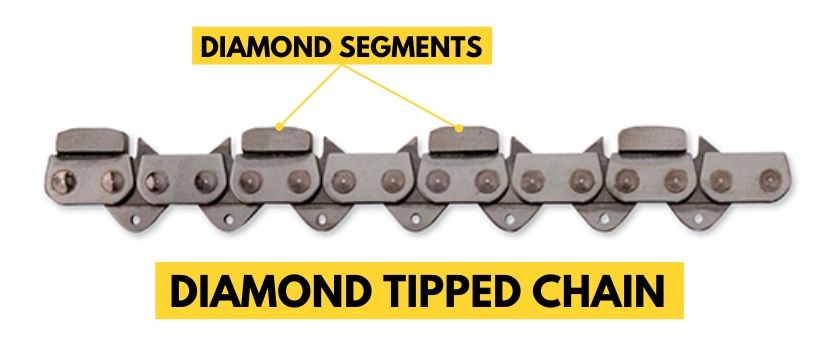
Can You Sharpen a Carbide Chainsaw Chain?
Yes, it’s possible to sharpen a carbide chainsaw chain but you’ll need a diamond grinding wheel and a bench grinder. Because carbide chains are made with tungsten carbide, which is extremely hard and difficult to sharpen compared to regular steel chains. This is the reason professional sharpening services charge so much for carbide chains.
Can You Use a Carbide Chain on Any Chainsaw?
You can use a carbide chain on any chainsaw as long as it’s the right size and type for your saw. However, firefighters use carbide chains with special rescue saws that have high power.

